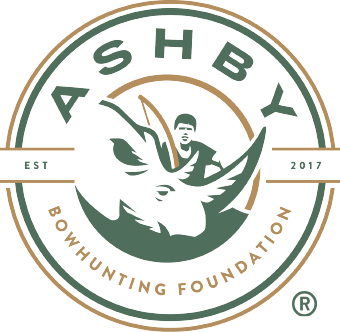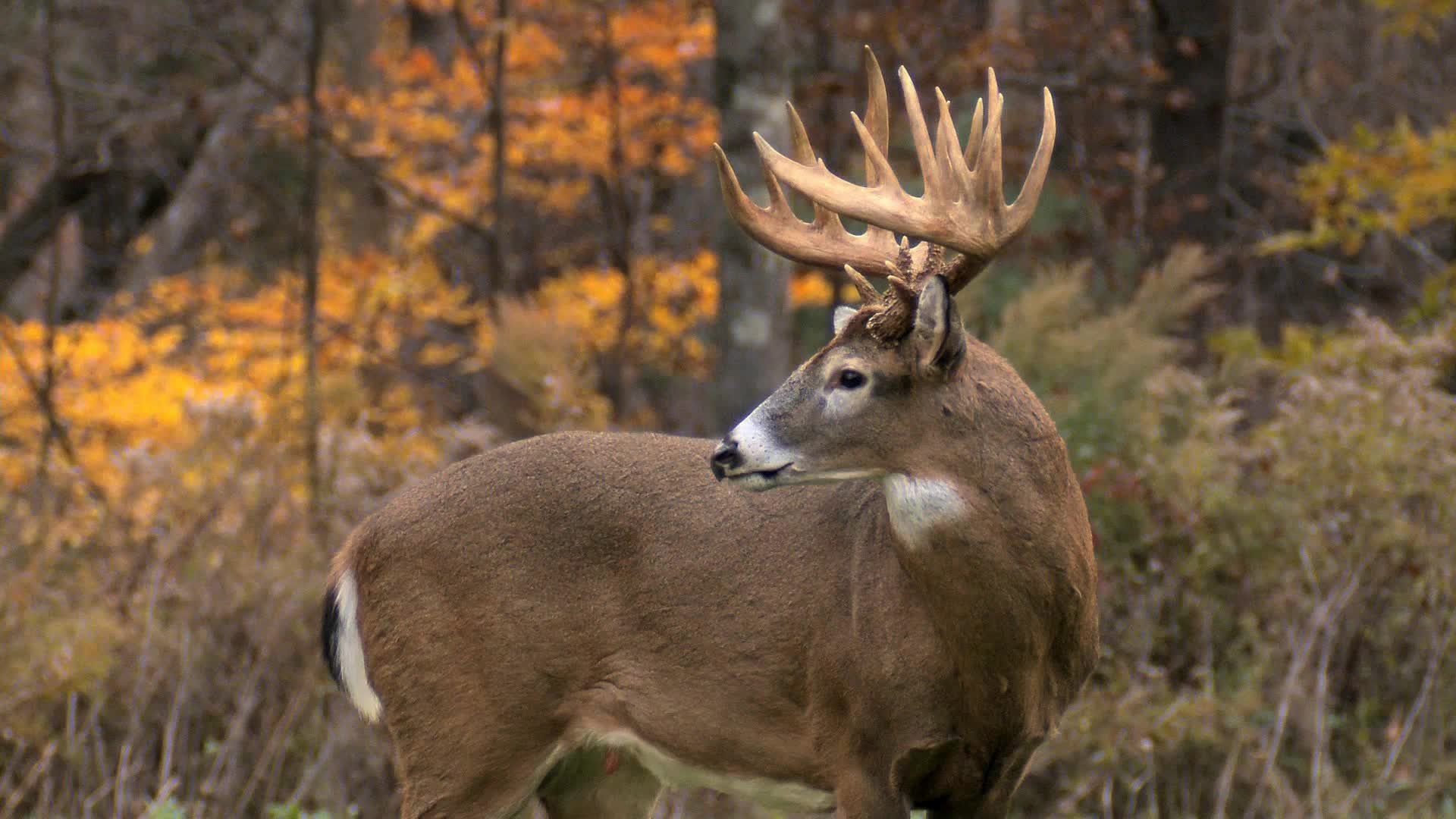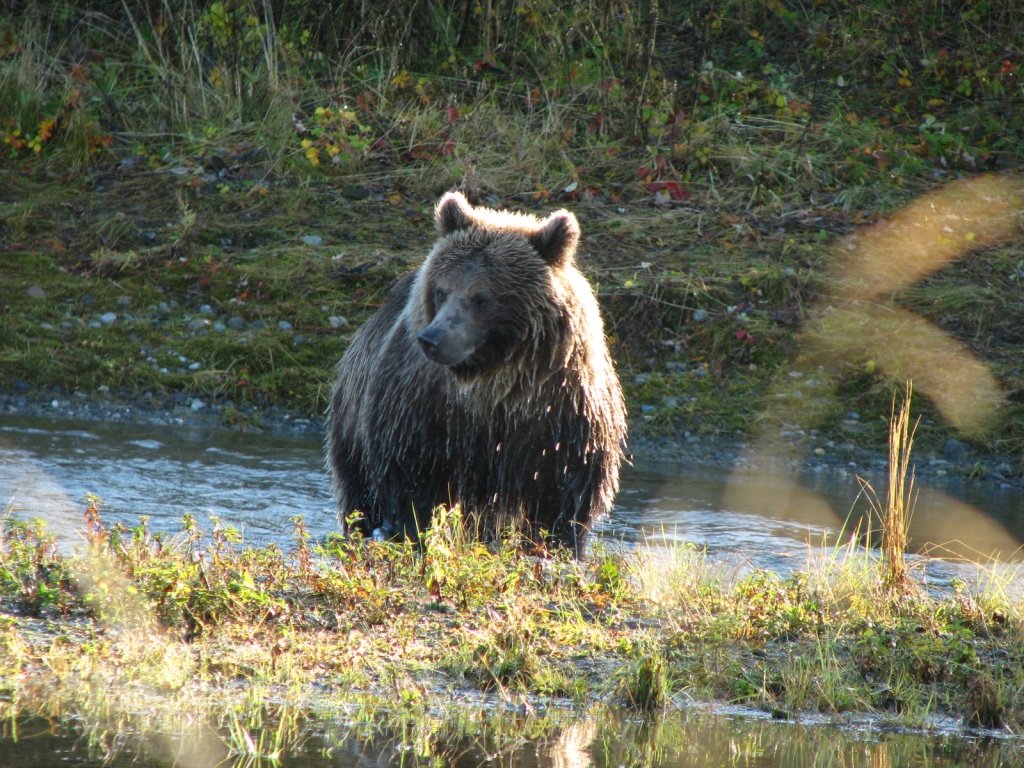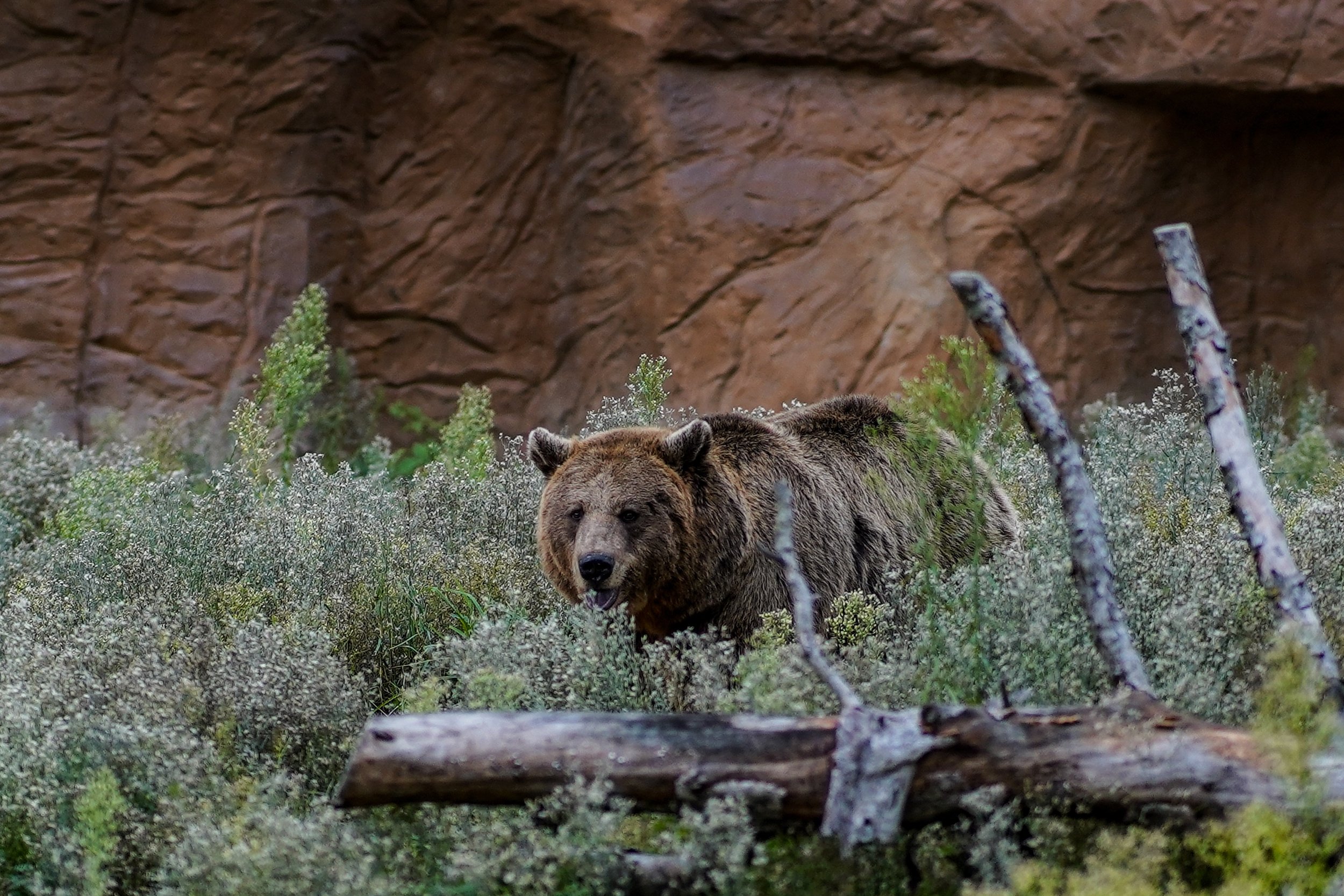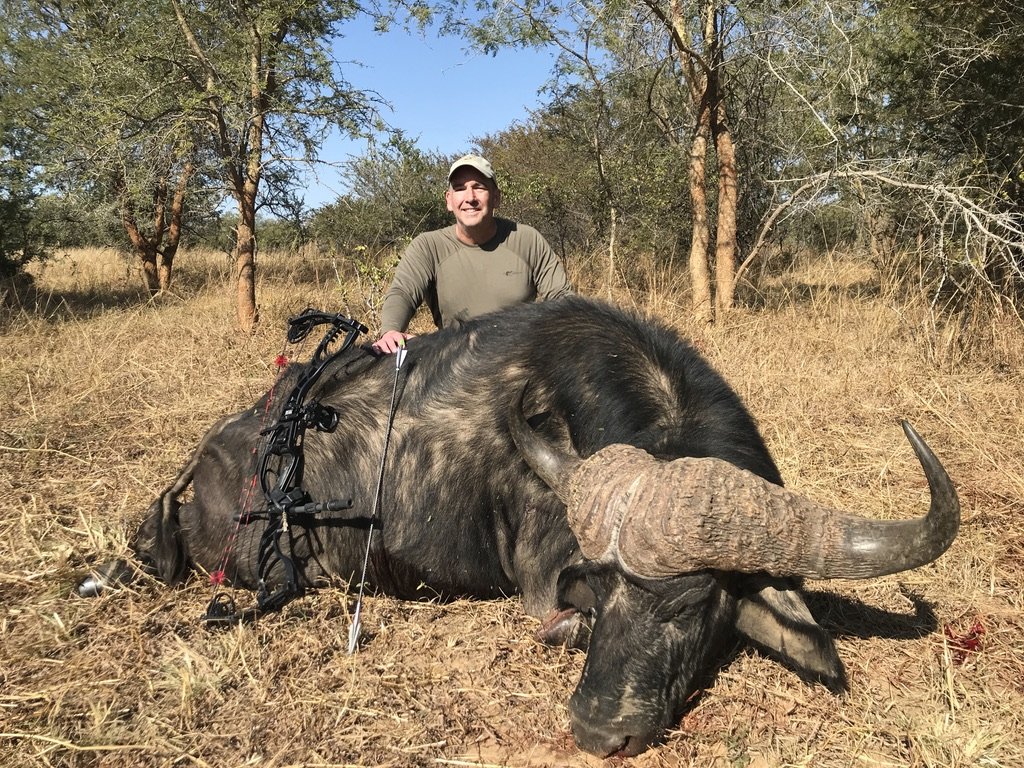Bull elk enjoying a wallow in a meadow at 10,900 feet in Colorado. The wind changes direction every 15 seconds in this meadow, making it nearly impossible to hunt.
Current News
Ashby Bowhunting Foundation Newsletter
March 2024
President’s Message
Rob Neilson with ABF test medium, the real deal.
Been a bit sidetracked with some personal business. My brother, Hal, gave us a hunter’s
farewell and unexpectedly passed away at 63 yrs old while hunting with his son. May we all be so fortunate to go quickly and doing something we truly love. RIP.
While many are heading the archery ranges preparing for their 3D season to improve their accuracy skills by shooting dots, we are gearing up for our testing season. We will gather more data throughout 2024 at unnamed locations. While on this topic, we had inquiries about testing brand x broadheads for a product review. For the record, we do not test broadheads for a product review. Various type broadheads are used to gather data points to study what works best where it matters, in hunting situations. The outcome/performance of a particular broadhead is only a by-product and snapshot in time of that testing to have as a reference point and add to the ever-growing database. Hope this clears up any confusion.
Good hunting and as always, have a nice day.
Rob Neilson
Donations
The Ashby Bowhunting Foundation is a 501 (c) (3) education and research organization. 100% of your donation will go to the Missions of Ashby Bowhunting Foundation. No salaries are paid by the Foundation. We realize there are many worthwhile organizations out there, and greatly appreciate your consideration and support.
Newsletter Tip
Assuming you know something…is typically the mother of all f-ups. In bowhunting that especially holds true as evidenced by the wounding/non-recovery of game animals. If you don’t know, research it and find correct, unbiased, non-promotional answers to what you seek.
Events
Tim Lepley and Ryan Miller selected for our first annual hog hunt. To be held sometime in April, 2024.
Testing Season
Hunting Season
From the Field - The Value of Stump Shooting or Roving
There’s nothing like being so close you can hear the elk breathing. Scouting an area thoroughly long before you hunt can lead to close encounters that would be impossible otherwise.
“The open hearth, shaded forest, hills and dales, all make good grounds. As he comes over a knoll a bush on the farther side represents a deer, he shoots instantly… Let several archers go into the fields together and roam over the land, aiming at various marks; it makes for robust and accurate game shooting.” Saxton Pope, Hunting with the Bow and Arrow, 1923
The morning sun lit up the forested ridge like a spotlight. Everything was glowing. I stood motionless, just taking in the sounds and scanning the view in front of me for motion. A tawny form caught my eye to the northwest. With the wind in my face and the bright sun at my back, I was invisible to this cow elk as she made her way through the lodgepole pine and kinnikinick laced forest floor. If she continued on this tragectory, there was a good chance she’d pass within 15 yards of me, broadside. I nocked an arrow on my recurve, placed the bottom limb on my knee and waited. At 20 yards, as her head passed behind a tree, I came to full draw. I waited until she was slightly quartering away before a softly blew on a cow call. She stopped. My arrow dove into the ground right in front of her and she exploded out of there, untouched. What? I walked up to retrieve my arrow and saw it had hit a branch that was the same color as her tawny coat, making it impossible to see in the bright sun. It was another reminder that shooting stationary targets at known distances was far different than releasing an arrow from a completely new position at a target I’ve never shot at before.
Saxton Pope, in that 1923 quote, was referring to the joy and value of stump shooting. Others may refer to the practice as roving. I prefer combining the terms as they each have value in describing what is taking place. Let’s start with roving. You’re walking through wild places that are similar to the areas you plan to hunt. Same tree cover, brush, grass, etc to deal with. You spy a rotten stump, a clump of grass, or a dark earthy patch of German chocolate cake soil. You drop to your knees, draw your bow and shoot from twenty yards away. The arrow enters the soil a foot to the right of the mark. A gut shot. And that was only twenty yards. Humbling and inspiring, knowing this is the real deal, duplicating a hunting situation as much as possible. Plenty of room for improvement. Stump shooting is simply drawing your bow on a new target, something you’ve never shot at before, never from that distance or shooting position. All new, everytime, just like hunting.
Stump shooting with a bow I made out of bamboo and Ipe. Every practice shot, while roving, is brand new, mimicking a true hunting situation.
Roving, for me, is the most important part of this time afield. And enjoying the experience with a fellow bowhunter will keep you honest and hone your skills much faster. You’ll trade off choosing targets, each one brand new to both of you. Vary your shooting position, from your knees, shooting around, over and under obstructions. In decades of bowhunting I know of no better practice. I prefer to use judo points for this time afield. Combining this with scouting an area is pure joy afield. Tie unwaxed dental floss off the front limb of your bow and learn the air currents of the area you plan to hunt. When is cold air drainage, thermals and the dominant wind in play? What’s it like on a high pressure versus low pressure days? Are you finding rubbed trees from last year’s elk rut? Wallows? Other sign? I believe these two activities, enjoyed together, represent the best way to get ready for the hunting season. From true life hunting scenarios with each shot taken to getting to know the area well, this has served me well.
Finally, roving and stump shooting represent an opportunity to slow down. Fred Asbell, in his classic book, Stalking and Still Hunting, recommends the following to match your pace with Nature’s pace. Assume you’re in lodgepole pine, north slope, September, and it smells like a barn yard. Elk are there. It’s not about covering a lot of ground. It’s about moving slow, paying attention to the air currents. Asbell suggests taking one slow step at a time, covering no more than a hundred yards every ten minutes. You might consider doing this alone as it will drive most others crazy. Take one step, scan what’s out in front of you, slowly, from side to side. Wait twenty seconds or more. Then take another step and repeat. The first time I did this I was on that north slope, smelled like an elk barnyard, lodgepole pine forest. After about twenty five minutes, something caught my eye down the slope about a hundred and fifty yards. I turned my head and saw only the right ear of an elk, flicking a pesky fly off. The rest of the animal was hidden. I slowly walked down the slope, carefully planting each foot, heal to toe. At about 100 yards I slipped off my boots, only my wool socks, quiet as a mountain lion, touching the earth. Completely quiet I continued. I walked right up to the back of the tree, slowly tipped my head around the trunk to see a cow elk laying down, looking in the opposite direction. I backed up the hill, grabbed my boots and continued hunting. She never saw me, heard me or smelled me. I wouldn’t trade that experience for anything. The combination of stump shooting and scouting radically changed my ability to get close to deer and elk. It’s worth leaning into.
Lean into the journey, it’s all journey in the end,
David Neils
Dr. Ed Ashby and an Asiatic Buffalo taken with a prototype Ashby broadhead
Doc’s Ramblings
Now, sometimes in life, a friend comes along with words of wisdom that make one think. I just had my 78th birthday in January. One of the birthday cards I received told me I had come to a significant crossroads in life, the junction of “Been There and Done That.” After a bit of thought, I concluded that he was correct. I’ve been to many places and done many things and was blessed to do so.
There are many crossroads I could talk about that led me to “do that,” not the least of which is how, by synchronicity, fate, chance, or divine guidance – whichever you chose to believe in – I always seemed to be in the right place at the right time to have the opportunity to do extensive research into the terminal performance of both bullets and arrows in actual tissues.
As I pondered the arrow lethality studies, one thought kept crossing my mind: many critics say they are irrelevant to modern bowhunting because they were conducted with traditional bows. There are many things these critics overlook. My failures on whitetail deer when using compound bows shooting light, fast arrows, and multi-blade broadheads first prompted me to research arrow terminal performance. They overlook that both a 94# traditional bow and an 85# compound were used in the initial Natal Study. They ignore that compound bows and new broadhead designs (including mechanicals) continued to be used throughout the testing. As the study gradually defined the most lethal arrow setups, I was forced to use only traditional bows to prevent excessive exit wounds and pass-through shots. (The relative penetration of differing arrow setups into tissues can only be compared when both stop within the tissues; exits cause the medium being penetrated to change.)
These critics also dismiss the newer testing that ABF’s own Rob Neilson conducted, using modern, up-to-date compound bows. They ignore that, to date, this more recent testing has
only validated all the earlier findings. So far, each outcome in this newer testing is precisely as the original studies predict.
I’d estimate that the majority of these critics fall into what I call the “Foam and Gel Crowd,” a small but exceedingly vocal group with an almost cult-like following (and many have some degree of industry-sponsored affiliation, which begs the question, “Why.”) These folks claim arrow penetration into an artificial medium of some type has a correlation with arrow penetration into real, in situ, tissues. Their “testing” has about as much validity as testing the flight characteristics of a jet aircraft in the ocean; in the ocean, it sinks like a rock, but when tested in its ‘real environment,’ air, one sees a totally different outcome.
None of the facts will ever sway these critics. However, merely ignoring them is not an option. One of ABF’s prime goals is to educate all bowhunters. Part of that is countering misleading information with facts whenever and wherever it is encountered.
Nonetheless, after four decades of continually countering these folks, I’m getting a bit weary of long replies, and I think it’s time to pass that torch along. I would appreciate the help. From now on, I think I’m entitled to reply to the foam and gel crowd, “Been There, Done That … It Didn’t Work”. The rest is now up to you.
Good hunting, my friends.
Dr. Ed Ashby
